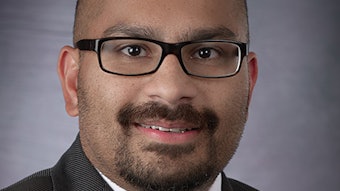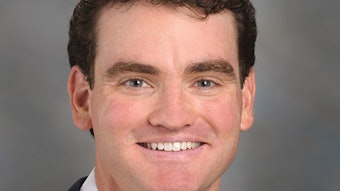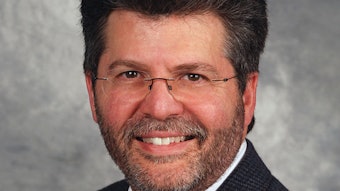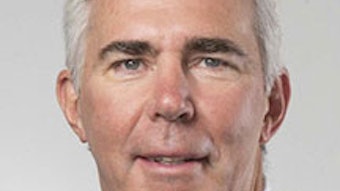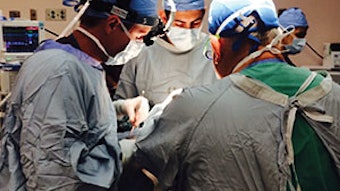Antimicrobial stewardship in otolaryngology
It is an oft-touted statistic that about half of all antibiotics are used inappropriately—a statistic garnered from inpatient and outpatient surveys of antibiotic usage rates, compared against specific diagnosis codes, and in some instances with a degree of “expert opinion” thrown in for good measure. What, after all, should be considered inappropriate usage?

By Nicholas Bennett MA, MBChir, PhD, and Tulio A. Valdez, MD, Msc, Connecticut Children’s Medical Center and University of Connecticut Health Center, for the AAO-HNS Infectious Disease Committee
It is an oft-touted statistic that about half of all antibiotics are used inappropriately—a statistic garnered from inpatient and outpatient surveys of antibiotic usage rates, compared against specific diagnosis codes, and in some instances with a degree of “expert opinion” thrown in for good measure. What, after all, should be considered inappropriate usage?
Certainly the use of antibiotics to treat symptoms due to viruses, or noninfectious conditions, would be inappropriate. We are fortunate perhaps in that the diagnosis of viral versus bacterial upper respiratory tract infections is so easy to make. (We jest.) Is it more appropriate to withhold antibiotics on the assumption that most viral infections are self-limited, or prescribe antibiotics just in case of a primary or secondary bacterial infection? In the context of headlines on worsening antibiotic resistance should the empiric use of antibiotics include the use of broader-spectrum agents than we have used previously? In order to avoid surgical site infections, is widespread empiric perioperative antibiotic usage necessary? These are all legitimate questions to ask, and worthy of asking because the answers aren’t obvious. While antibiotics have led to dramatic improvements in health, inappropriate antibiotic usage has been shown to lead to increased adverse drug reactions, antibiotic resistance, Clostridium difficile infections, and unnecessary cost.
The role of antimicrobial stewardship is to help physicians, surgeons, residents, and advanced practitioners find the balance between the immediate needs of a patient and the future needs of that patient and everyone else. There are several well-studied, evidence-based approaches to the dilemmas of antibiotic use1 but how to apply them in practice is often more difficult than one might think. There are certain core concepts though: In general, one should use only as broad an antibiotic as one needs to treat an infection, at the correct dose, for the correct duration. So how does one come to that information, and what can we do to ensure it happens routinely in practice?
In the hospital-based setting formal antimicrobial stewardship programs have gone from being a nice idea to inclusion in Presidential Executive Orders. There is wide variation in practice between institutions, and where there is variation there is the need for standardization.
With specific regard to otolaryngology, Valdez, et al.,2 reported on perioperative antibiotic use among 442 surgeons, with wide variation is usage rates, from 91.1 percent for laryngectomy to 11.2 percent for microlaryngoscopy. Interestingly, for many surgeons who routinely used antibiotics perioperatively, around half of them felt there was “not enough evidence” to use antibiotics in that way. Antonelli’s recent review3 of the literature regarding the use of perioperative antibiotics in otolaryngology would support this view, with antibiotics either showing no benefit in reducing surgical site infection rates for clean procedures, whereas there was data to support the use of antibiotics in neurotologic craniotomies. At least a few studies (covered in Antonelli’s review) have addressed the impact of anti-staphylococcal and anti-pseudomonal antibiotics as perioperative coverage for tympanoplasty with or without mastoidectomy, where post-surgical infection rates can be higher than 10 percent. Results have been mixed, and may depend as much on patient-specific factors such as the pre-operative microbial flora as the type of surgery and antibiotic used—a situation that makes both the development and implementation of broad, consensus guidelines difficult, but also identifies an area of research need.
Perhaps duration of prophylaxis is an area of need to be addressed; most surgical procedures probably need no more than enough antibiotics to cover the procedure itself, with no additional benefit seen in extended post-operative therapy for 24 or 48 hours.4
Evidence-based guidelines, adapted for local needs and concerns, can make significant improvements in antibiotic usage without any increase in adverse patient outcomes—in fact more typically with improvements in the risks associated with antibiotic usage. There are guidelines with direct application to otolaryngology that could readily be adopted and adapted using the concepts of antimicrobial stewardship. The American Academy of Otolaryngology Foundation—Head and Neck Surgery has practice guidelines on adult sinusitis5 for example, and the most recent update now recommends watchful waiting without antibiotics for all cases of uncomplicated disease, rather than just those with mild symptoms. The guidelines also recommend the use of amoxicillin with or without clavulanate as initial therapy, and the use of a “wait and see prescription” as part of the initial management in some cases. For some clinicians these may be significant changes in practice, but ones which have proven positive effects on overall antibiotic utilization, and which could be relatively easy to implement as an individual or group effort. Aside from improved clinical care, reduced healthcare costs, and lower risks of future antibiotic resistance, such quality-improvement efforts can be used toward Part IV Maintenance of Certification credit.
Surgical specialties have as much of a role to play in antimicrobial stewardship as any other medical field—and in fact have so much more to lose. The modern antibiotic age has allowed surgical procedures to be performed that would have been fatal without the availability of relatively safe and effective antimicrobials. If we lose the battle with the microorganisms, we lose the ability to keep our patients safe from invasive procedures, and what is now routine could become too risky to perform unless under exceptional circumstances. We owe it to our future selves and colleagues, and our patients, to do the best we can to use antibiotics judiciously.
References
- Dellit TH, et al, Infectious Diseases Society of America and the Society for Healthcare Epidemiology of America Guidelines for Developing an Institutional Program to Enhance Antimicrobial Stewardship, CID 2007;44(2):159-177.
- Valdez TA, et al, Current trends in perioperative antibiotic use: a survey of otolaryngologists. Otolaryngol Head Neck Surg. 2015 Jan;152(1):63-66.
- Antonelli PJ, Perioperative use of antibiotics in otologic procedures. Curr Opin Otolaryngol Head Neck Surg. 2015 Oct;23(5):330-3.
- Bratzler DW, et al. Clinical practice guidelines for antimicrobial prophylaxis in surgery. Am JHealth-Sys Pharm. 2013;70(3):195-283.
- Rosenfeld RM, et al. Clinical Practice Guideline (Update): Adult Sinusitis. Otolaryngol Head Neck Surg. 2015;152(2S) S1–S39.

